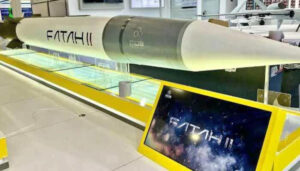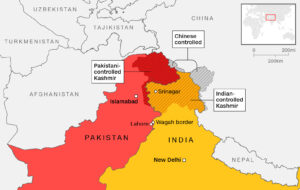India-Pakistan Conflict: Inside Pakistan’s Operation Bunyan-ul-Maroos and the Threat of Fatah-2 Missiles

FOR MORE : https://newsorgames.com/
The already fragile relations between India and Pakistan have reached a new level of tension following allegations of missile threats and a shadowy military campaign. Reports suggest that Pakistan may have launched a covert operation—codenamed Operation Bunyan-ul-Maroos—with the objective of targeting key Indian cities using Fatah-2 missiles, a medium-range tactical ballistic weapon.
These developments have sparked serious concern not only within South Asia but also across the international community, which fears the escalation of a full-scale war between two nuclear-armed neighbors.
What Is Operation Bunyan-ul-Maroos?

FOR MORE : https://newsorgames.com/
Although not officially acknowledged by the Pakistani military, multiple defense analysts and intelligence leaks have pointed to a strategic campaign called Operation Bunyan-ul-Maroos. The name, derived from Arabic, roughly translates to “Structure of the Righteous,” suggesting a defensive but forceful ideological basis for its mission.
Alleged Objectives of the Operation
According to unverified but widely circulated sources, the operation was designed to:
-
Demonstrate military readiness in the face of perceived Indian aggression.
-
Deliver a calibrated warning through limited missile deployment.
-
Undermine India’s sense of regional security.
It is reported that Fatah-2 missiles, with a range of up to 400 kilometers and equipped with advanced targeting systems, were prepared for launch at strategic Indian urban centers. While no official confirmation of an actual strike has emerged, the movement of missile launchers and heightened military alertness have fueled fears of imminent escalation.
India’s Response: Military and Political Pressure Mounts

India has strongly condemned the alleged operation, calling it a “reckless provocation” and a violation of international norms. The Indian Armed Forces have responded with:
-
Increased troop deployment along the Line of Control (LoC).
-
Enhanced air defense readiness across northern command regions.
-
Diplomatic outreach to global allies to highlight the severity of the threat.
Politically, there is growing pressure on the Indian government to retaliate. Opposition parties and nationalist factions are urging a “strong and unforgiving response,” further limiting the room for peaceful negotiation.
International Reaction: Urgent Calls for De-escalation

Given the gravity of the situation, major global powers have swiftly moved to de-escalate tensions.
United Nations
The UN Secretary-General issued a public statement urging both nations to exercise “maximum restraint” and “engage in immediate dialogue.” The UN Security Council held a closed-door emergency session to assess the threat and coordinate diplomatic efforts.
United States and China
Despite their strategic rivalries, both the U.S. and China have called for calm. The U.S. State Department expressed concern about the potential use of ballistic missiles in populated areas, labeling such actions as “highly destabilizing.” China, while historically closer to Pakistan, also encouraged Islamabad to avoid provocative moves and emphasized regional stability.
Other Regional Players
Nations like Russia, the UAE, and Saudi Arabia have offered to mediate, citing their established relationships with both India and Pakistan. Backchannel diplomacy is reportedly underway through embassies and intelligence liaisons.
The Threat of Fatah-2 Missiles: A Dangerous Game
The Fatah-2 missile system represents a serious tactical escalation. Designed for short to medium-range precision strikes, it offers Pakistan the ability to target military and civilian infrastructure with limited warning.
Why This Matters
-
Rapid Response: These missiles can be launched quickly and with limited detection.
-
Urban Risk: Their range makes major Indian cities vulnerable.
-
Nuclear Ambiguity: Their dual-use capability blurs the line between conventional and nuclear threats, increasing the risk of miscalculation.
Such capabilities make strategic posturing far more dangerous, as either side may interpret movements as a prelude to nuclear warfare.
A Path Toward De-escalation: What Can Be Done?
While the situation is undeniably tense, there remain clear avenues for peaceful resolution:
1. Diplomatic Dialogue
Immediate backchannel communication, preferably facilitated by a neutral third party (such as Switzerland or Norway), can help reduce misunderstandings and lay the groundwork for public negotiations.
2. Confidence-Building Measures (CBMs)
Both countries can revive and expand prior CBMs such as:
-
Hotline communication between military leaders.
-
Advance notice of missile tests.
-
Exchange of military data to prevent accidental escalation.
3. International Mediation
Global institutions like the UN, or alliances like the Organization of Islamic Cooperation (OIC) and SAARC, can provide structured environments for peace talks, ensuring that both countries maintain face while stepping back from the brink.
4. Disarmament Talks
In the longer term, initiating bilateral arms control agreements focused on missile systems could limit the potential for future escalations. While politically challenging, such talks have precedent in Cold War-era U.S.-Russia diplomacy.
Conclusion: The World Watches, But Responsibility Lies Within

The current India-Pakistan standoff is a sobering reminder of how quickly military posturing can spiral into uncontrollable conflict—especially in a nuclear context. While international players have an essential role in pressuring both sides toward peace, the ultimate responsibility lies with the governments in New Delhi and Islamabad.
Words must replace weapons, and diplomacy must replace deterrence. Only then can South Asia move beyond its cycles of hostility and toward sustainable peace.
FOR MORE : https://newsorgames.com/

Leave a Reply